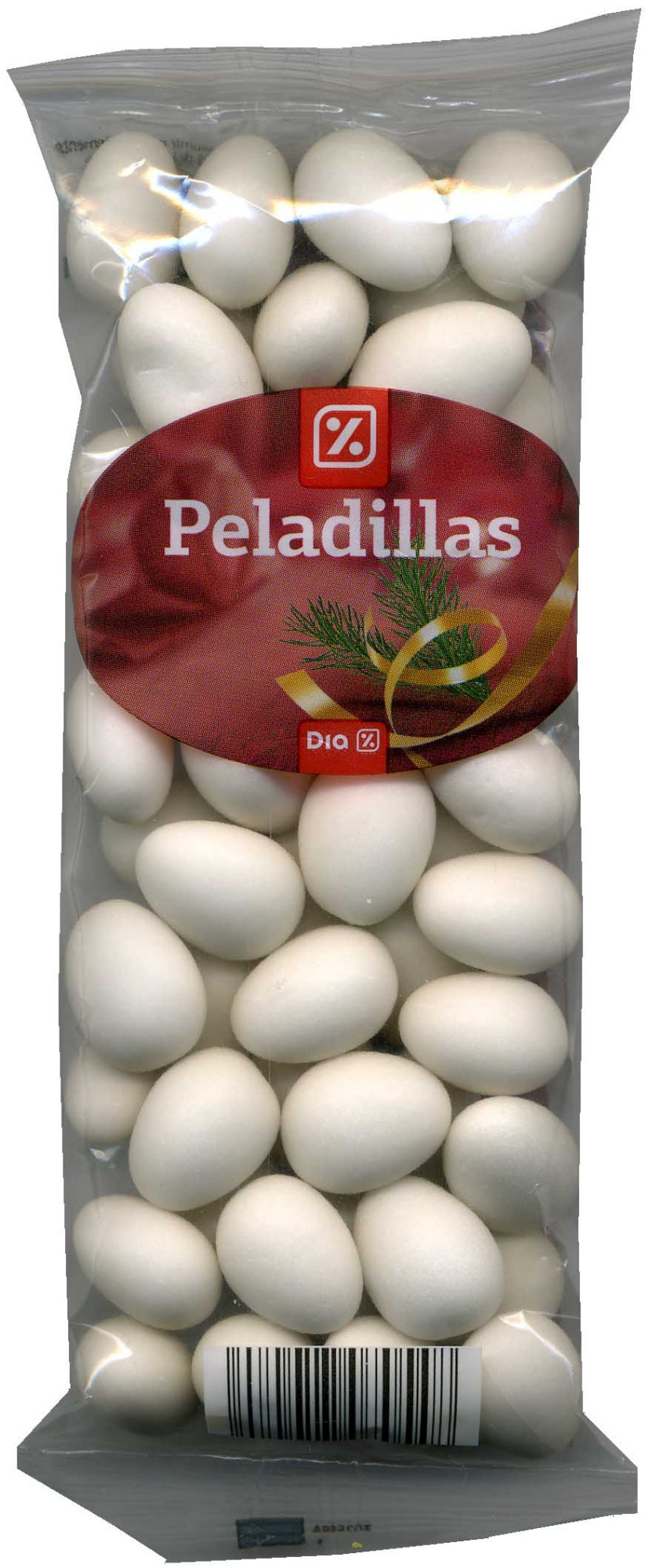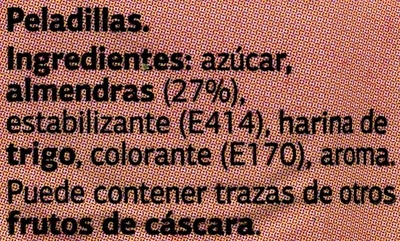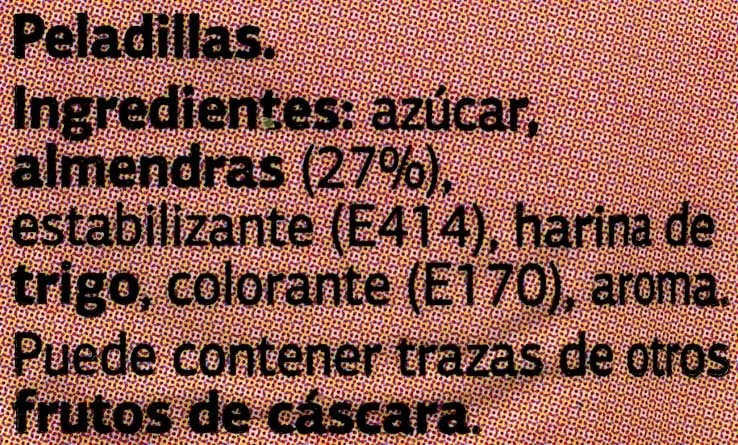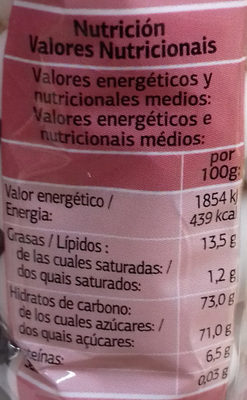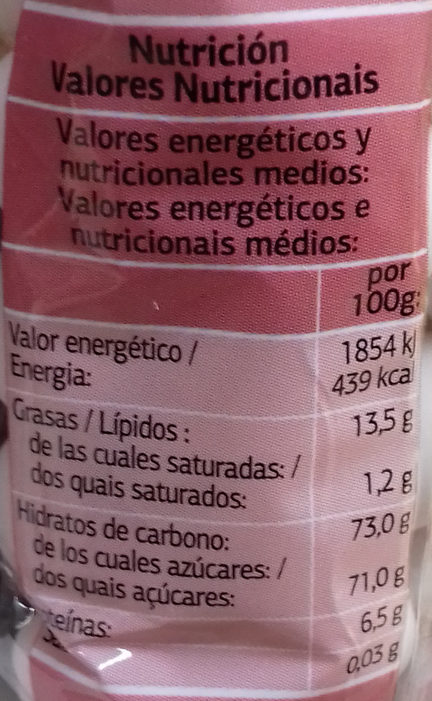Peladillas - Dia - 150 g
This product page is not complete. You can help to complete it by editing it and adding more data from the photos we have, or by taking more photos using the app for Android or iPhone/iPad. Thank you!
×
Barra-kodea: 8480017070548 (EAN / EAN-13)
Izen arrunta: Peladillas (Almendras cubiertas de azúcar)
Kopurua: 150 g
Ontziratzea: es:Bolsa de plástico
Markak: Dia
Kategoriak: en:Plant-based foods and beverages, en:Plant-based foods, en:Snacks, en:Sweet snacks, en:Confectioneries, en:Festive foods, en:Nuts and their products, en:Christmas foods and drinks, en:Christmas sweets, en:Nut confectioneries, en:Dragées, en:Sugar coated almonds
Etiketak, ziurtagiriak, sariak: en:Vegetarian, en:Vegan
Manufacturing or processing places: Orgaz, Toledo (provincia), Castilla-La Mancha, España
Traceability code: FABRICANTE Y ENVASADOR:, DASA - DELAVIUDA ALIMENTACIÓN S.A., PERTENECIENTE A:, NEW AGE INVESTMENT S.L.U.
Dendak: Dia
Saltzen diren herrialdeak: Espainia

